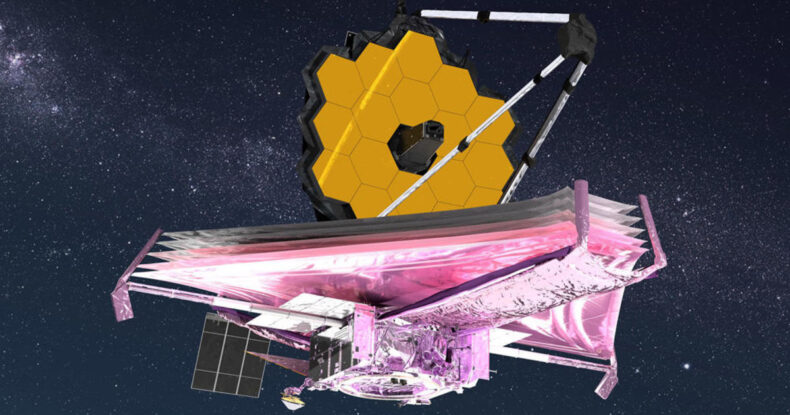Mightier than the iconic Hubble, James Webb Space Telescope is ready for launch
The decade delayed launch by NASA, James Webb Space Telescope (JWST), is prepared to be launched this Christmas Eve (Friday), rescheduled after two delays in 2021.
It will take off at 12:20 UTC on December 24 from Europe’s Spaceport in Kourou, French Guiana, on an Arianespace Ariane 5 ECA rocket.
NASA: James Webb Telescope to be launched on December 24
Starting with an initial budget of $500 million, now a $10 billion project, this telescope is put on a make-or-break mission to unravel the mystery of the cosmos. Surpassing the powerful Hubble launched in 1990, JWST will be the most expensive and complex technological driven mission.
It will be like a time machine helping astronomers worldwide to look back 13.5 billion years in time and understand the formation of the Big Bang, the existence of the galaxies and our very own solar system.
JWST Project
The JWST project has its origin in the late 1990s and was expected to launch in 2007. Initially called Next Generation Space Telescope (NGST), it was renamed after NASA’s second administrator James E Webb as James Webb Space Telescope (JWST). Northrop Grumman is the prime contractor of this project.
The primary mirror of JWST is gold-plated with a 6.5 m diameter primary mirror, much larger than Hubble (2.4 m), running at a lower frequency range, to ease the observance of old and distant objects in space.
2. Unveiling the mystery of the universe through NASA’s Webb Telescope
It will position itself near the second Lagrange point (L2) orbiting the sun. The telescope will be kept very cold to observe the bare infrared cosmos, leading to a risky disadvantage. Unlike Hubble, which circles the earth, JWST is placed at a distance beyond the reach of repairing hands, leaving zero scopes of error.
The project projects a do-or-die situation for NASA, resulting in the most successful mission in history or the most crushing and decade long failure.
“This is about the hardest thing we’ve ever done for NASA astronomy,” says Nobel laureate John Mather, the Webb program scientist. “And we’ve put more work into it than you can imagine. We have rehearsed and tested and verified our processes over and over again.”
NASA stated that the Webb telescope would be on its mission for at least five and a half years, much lesser than Hubble because of its higher fuel consumption and the damages that might occur as it is exposed to the harsh environment.
Watching the launch
Webb will be launched at 7:20 am EST; 5:50 pm IST for Indian viewers. The launch will be live on NASA TV, the NASA app, the agency’s website, and other social media platforms- Facebook, Twitter, and YouTube.
NASA even hosted an online challenge- #UnfoldTheUniverse. The challenge required the participants to showcase what they believe the Webb telescope will unveil after its launch.
They can use any form of art, dance, song or writing, share it online using the hashtag and get a chance to be featured on NASA’s website, social media platforms and the historic live broadcast.













